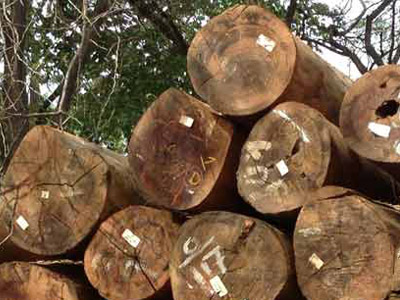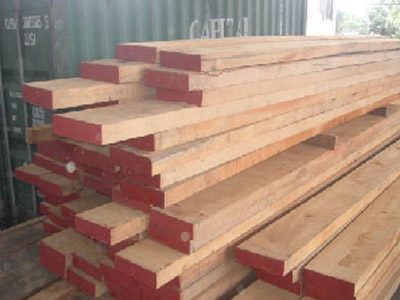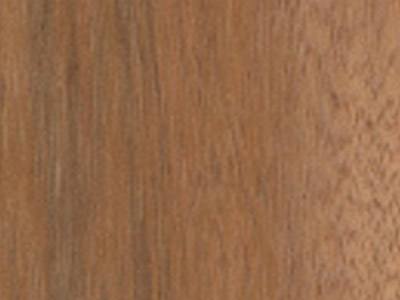Mora
- General Details
Origin :
Northeastern South America (primarily Guyana and Suriname)Color or Appearance :
Heartwood is light to medium reddish brown. Wide pale yellow-brown sapwood is clearly demarcated from heartwood.Grain/Texture :
Has a straight to interlocked grain, with a medium to coarse texture. Good natural luster.Endgrain :
Diffuse-porous; large pores in no specific arrangement, few; solitary and radial multiples of 2-3; heartwood deposits present; narrow rays faintly visible without lens, normal spacing; parenchyma vasicentric,lozenge, winged, confluent, and marginal.Rot Resistance :
Mora is rated as durable to very durable, and also has good resistance to insect attacks.Workability :
Pieces with interlocked grain can be difficult to work, frequently resulting in tearout during machining operations. Mora also has a pronounced blunting effect on cutting edges.Odor :
Mora can have an unpleasant and sour odor while being worked.Allergies / Toxicity :
Mora has been reported to cause respiratory irritation.Comman Uses :
Flooring, boatbuilding, heavy (exterior) construction, and turned objects. - Technical Info
Tree Size :
100-130 ft (30-40 m) tall, 2-3 ft (.6-1.0 m) trunk diameterAverage Dried Weight :
63 lbs/ft3 (1,015 kg/m3)Specific Gravity (Basic, 12% MC) :
.80, 1.01Janka Hardness :
2,300 lbf (10,230 N)Modulus of Rupture :
22,550 lbf/in2 (155.5 MPa)Elastic Modulus :
2,790,000 lbf/in2 (19.24 GPa)Crushing Strength :
11,950 lbf/in2 (82.4 MPa)Shrinkage :
Radial: 6.7%, Tangential: 9.9%, Volumetric: 17.7%, T/R Ratio: 1.5



